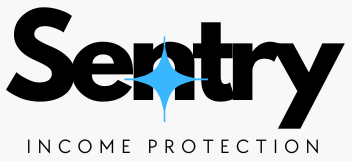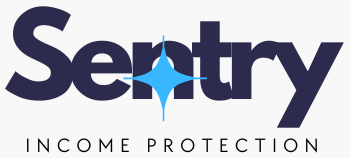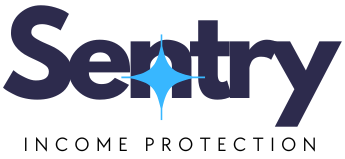Private Disability Insurance
Call (469) 905-4422 for a free Disability Insurance quote! Let Sentry Income Protection safeguard your future.
What is Private Disability Insurance
Private disability insurance is a vital financial tool designed to protect your income if you’re unable to work due to illness or injury. Unlike government sponsored programs like Social Security Disability Insurance (SSDI) or workers’ compensation, private disability insurance offers customizable, robust coverage tailored to your specific needs. Questions like “What is private disability insurance?” and “How does it differ from other forms of coverage?” are common, especially among high-income professionals who rely heavily on their earning potential. The answers depend on the policy’s structure, your occupation, and your financial goals. This article explores the nuances of private disability insurance, its key components, and why it’s essential for safeguarding your financial future. With a focus on clarity and engagement, we’ll dive into the types, benefits, and considerations of private disability insurance to help you make informed decisions.
Defining Private Disability Insurance
Private disability insurance is a type of coverage purchased through an insurance carrier, either individually or through an employer, to replace a portion of your income if you become disabled and cannot perform your job duties. Unlike social programs, which often have strict eligibility criteria and limited benefits, private disability insurance offers greater flexibility, higher benefit amounts, and more lenient definitions of disability. It’s designed to provide financial stability, allowing you to maintain your lifestyle, cover living expenses, and meet financial obligations during a period of disability.
For high-income self employed business owners and professionals such as doctors, lawyers, or executives, private disability insurance is particularly critical. Your ability to earn a substantial income is often your most valuable asset, and a disability could jeopardize your financial security without adequate protection. Private policies can be tailored to cover specific income levels, occupations, and even unique circumstances, making them a cornerstone of comprehensive financial planning. An important distinction to understand is the difference between “own occupation” and “any occupation” coverage. Own occupation policies pay benefits if you’re unable to perform the duties of your specific profession, while any occupation policies only pay if you’re unable to work in any suitable job. Knowing which type your policy offers is crucial to ensuring the protection truly fits your career and income.
Types of Private Disability Insurance
Private disability insurance comes in two primary forms: short term disability (STD) insurance and long term disability (LTD) insurance. Each serves a distinct purpose, offering varying durations and levels of coverage.
Short Term Disability Insurance
Short term disability insurance provides income replacement for temporary disabilities, typically lasting from a few weeks to a year. These policies are ideal for covering the elimination period (waiting period) of a long term disability policy or as a standalone option for those who need temporary protection but cannot afford long term coverage.
- How It Works: If you’re unable to perform your regular job duties due to an illness or injury, a short term disability policy kicks in after a brief elimination period (often 7 to 14 days). Benefits are paid for a limited duration, usually 3 to 12 months, depending on the policy.
- Key Features: Private short term disability policies typically offer higher benefit amounts than state funded programs and have simpler claims processes. They may cover 60-70% of your income, with benefit caps that vary by policy.
- Who Needs It: Short term disability insurance is crucial for individuals who cannot afford to go without income for even a few months. According to the Social Security Administration, 1 in 4 individuals aged 20 today will experience a disability during their career, underscoring the importance of having paycheck protection.
Note on Pregnancy: A common misconception is that private short term disability insurance covers lost wages due to normal pregnancy or childbirth. In the individual market, most policies do not cover routine maternity leave, though complications arising from pregnancy may be covered. Some employer sponsored group plans or state programs (in states like California or New York) may offer maternity related benefits, but these are exceptions rather than the rule.
Long Term Disability Insurance
Long term disability insurance provides income replacement for extended periods, often from two years up to age 70, depending on the policy. It’s designed for serious disabilities that prevent you from working for an extended time or permanently.
- How It Works: After an elimination period (typically 90 to 180 days), the policy begins paying benefits if you’re unable to perform the duties of your occupation (or, in some cases, any occupation). Benefits can continue for years, providing a steady income stream to cover living expenses, medical costs, and other financial obligations.
- Key Features: Long term disability policies offer higher benefit amounts than short term policies, often covering 50-70% of your pre-disability income. They can be customized with riders (add-ons) to enhance coverage, such as cost of living adjustments or residual benefits for partial disabilities.
- Who Needs It: Long term disability insurance is essential for high-income professionals, particularly those under 50, whose future earnings are their most significant asset. Without it, a prolonged disability could lead to financial ruin, especially for those living paycheck to paycheck or with substantial financial commitments.
Private disability insurance offers several advantages over these programs:
- Higher Benefit Amounts: Private policies can replace a larger portion of your income, often up to $15,000-$20,000 per month or more, compared to the low caps of social programs.
- More Lenient Definitions: Private policies often define disability as the inability to perform the duties of your specific occupation, rather than any occupation, making it easier to qualify for benefits.
- Customizable Coverage: Private insurance allows you to tailor policies to your needs, with options for longer benefit periods, shorter elimination periods, and additional riders.
- Simpler Claims Process: Unlike SSDI’s bureaucratic hurdles, private insurers typically have streamlined claims processes, providing faster access to benefits.
Key Components of a Private Disability Insurance Policy
Understanding the structure of a private disability insurance policy is critical to choosing the right coverage. Most policies include the following components, each of which impacts your premiums and the level of protection provided:
- Elimination Period: This is the waiting period before benefits begin, akin to a deductible but measured in time rather than money. Common elimination periods range from 30 to 180 days, with shorter periods resulting in higher premiums. A 90 day elimination period is a common default for long term policies.
- Occupation Class: Your occupation significantly affects your premiums. Insurers categorize jobs into risk classes, with low risk occupations (e.g., office based professionals like accountants or lawyers) commanding lower premiums than high risk ones (e.g., construction workers or nurses).
- Policy Definitions: The definition of disability determines how easily you can qualify for benefits. “Own occupation” definitions, which consider you disabled if you can’t perform your specific job, are more favorable (and expensive) than “any occupation” definitions, which require an inability to work in any job.
- Benefit Amount: This is the monthly payment you receive if disabled, typically 50-70% of your pre-disability income. Higher benefit amounts increase premiums but provide greater financial security.
- Benefit Length: This specifies how long benefits will be paid, ranging from two years to age 70 for long term policies. Longer benefit periods increase costs but offer extended protection.
- Policy Riders: Optional add-ons enhance coverage but raise premiums. Common riders include:
- Residual Benefits: Pays partial benefits if you can work part-time or in a lower paying role due to a disability.
- Cost of Living Adjustment (COLA): Increases benefits over time to account for inflation.
- Future Purchase Option: Allows you to increase coverage as your income grows without additional medical underwriting.
These components work together to shape your policy’s cost and effectiveness. For example, a policy with a short elimination period, own occupation definition, and high benefit amount will be more expensive but provide superior protection.
Why High-Income Professionals Need Private Disability Insurance
For high-income professionals, private disability insurance is non-negotiable. If you earn a six figure income, social programs like SSDI or state plans won’t come close to replacing your earnings. For instance, a surgeon earning $500,000 annually might receive a fraction of that from SSDI, leaving a significant income gap. Private long term disability insurance can bridge this gap, ensuring you can maintain your lifestyle, pay for medical care, and meet financial obligations like mortgages or college tuition.
Employer sponsored group disability plans, while common, often fall short for high earners. These plans may cap benefits at $5,000-$10,000 per month, exclude bonuses or commissions, and use less favorable definitions of disability. Additionally, group plan benefits are often taxable if the employer pays the premiums, reducing your net payout. An individual private policy, purchased directly, offers higher benefits, better definitions, and tax free payouts if you pay the premiums yourself.
The financial risk of disability is stark: the Social Security Administration notes that 25% of 20 year olds will face a disability before retirement. Without private disability insurance, a prolonged inability to work could deplete savings, force asset sales, or lead to debt, particularly for those living paycheck to paycheck.
Choosing the Right Private Disability Insurance Policy
Selecting the right private disability insurance policy requires careful consideration of your income, occupation, health, and financial goals. Here are key steps to guide your decision:
- Assess Your Needs: Calculate how much income you need to cover essential expenses. Online tools, such as disability insurance calculators, can help estimate your coverage requirements.
- Compare Policies: Work with an experienced insurance agent to review policies from top carriers. Look for policies with own occupation definitions, adequate benefit amounts, and reasonable elimination periods.
- Evaluate Riders: Consider add-ons like residual benefits or COLA riders to enhance your policy’s flexibility and long term value.
- Understand Group Coverage: If you have employer sponsored disability insurance, review its limitations. You may need an individual policy to supplement gaps in coverage.
- Consult an Expert: Disability insurance is complex, and policies vary widely. An independent agent can provide customized quotes and explain how policy components align with your needs.
Private Disability Insurance in Conclusion
Private disability insurance is a cornerstone of financial security, particularly for high-income professionals whose earning potential is their greatest asset. Unlike social programs, which offer limited benefits and stringent eligibility requirements, private disability insurance provides customizable, robust coverage to protect your income and lifestyle. Whether you opt for short term coverage to bridge temporary gaps or long term coverage for extended protection, understanding the key components is. Terms such as elimination period, occupation class, policy definitions, benefit amount, benefit length, and riders.
Call 469-905-4422 for a Free Disability Insurance Quote! We represent all the top carriers and can provide an unbiased evaluation that meets your individual needs.












